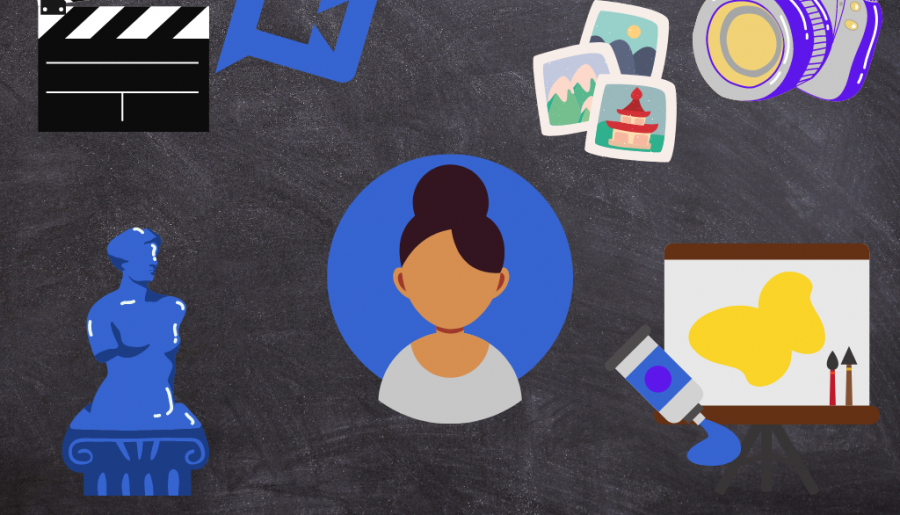Digital art is a method of art-making made with the help of digital media (or presented on digital media). It includes images and other multimedia formats produced by using computers, software, or other electronic devices.
Digital art is basically a fusion of art and technology. It opens up countless new ways of making art and allows artists to combine various technologies.
Contents
Types of Digital Art
Anything made with the help of digital technology can be classified as digital artwork.
Digital art has various uses mainly in the commercial sphere (media advertisements, visual graphic effects, 3D modeling, animations in movies and video games).
These are practices associated with digital artwork:
- Digital painting
- Photography
- Videos, Animations
- Sculpting
- Projection Mapping
- Integrated Digital Art (Mixed media)
Digital Painting
Digital painting is the process of painting digitally on a computer or tablet using painting software. This software uses traditional painting techniques and tools such as brushes, pencils, watercolors, erasers, etc. 2D designs can be fully rendered in the digital device. These designs can further serve as a base for 3D modeling.
It is one of the most practiced types of digital art.
Digital Photography
Digital photography is technology when photographers capture, create, edit and share digital images without the use of film.
Digital photography offers more control over exposure, can be viewed immediately and edited on a computer. There are several digital photography software programs that enable the adjustment of texture, color, brightness, and other qualities.
Videos, Animations
Video is a visual media featuring moving images (with or without audio).
Animation is a simulation of movement generated by a series of pictures in a sequence.

Digital Sculpting
Digital sculpting is the process of manipulating digital objects using some software. Because it forms 3D sculptures, it’s also called 3D sculpting.
Digital sculpting forms a digital object with material similar to digitalized clay or wood. It uses various tools of computer software to push, pull, pinch, smooth, grab, or other tools to form digital objects. These digital objects imitate textures and forms from real life. Sculpted objects can be presented as physical models, displayed as virtual images, or they can provide 3D visualizations.
The process of creating a virtual sculpture is much more complicated than previously mentioned digital art methods.
Projection Mapping
You know what a video projector is – it’s a gadget that is projecting on a flat screen.
Projection Mapping is a projection technique that allows projection onto any surface, even irregularly shaped surfaces. When projection mapping was first introduced it was limited to flat walls, but nowadays it can project video on a non-flat or non-white surface.
The most famous form is the mapping of buildings, but some of the other surfaces include stages, roads, runways, water, and others. This technique is basically turning these objects into interactive surfaces for video projection.
Projection Mapping has countless applications – it’s commonly used in advertising, theater, concerts, festivals, decoration, amusement parks, gaming…
Integrated Digital Art (Mixed Media)
Integrated digital art is a technique that combines 2 or more digital techniques (such as digital painting, photography, 3D models, augmented reality, sculpting, etc.)
When combining techniques, traditional media use the term Mixed media while digital media use the term Integrated digital art.
Traditional media is more limited than digital media in terms of creation and integration.
In some cases integrated digital artworks combine also other forms of art (music, writing, film, and theater).
What are the Benefits of Digital Art?
In comparison with traditional art, digital art has some advantages:
- Digital art is more convenient – you don’t need a big art studio equipped with tools. Also storage and delivery of digital artworks are much easier.
- It’s also more efficient – you can start working when creative flow hits you in any setting. In addition to that, you don’t need to tidy up after finishing your work – all you need to do is to save your work and turn off the computer.
- Easy to make corrections – you can redraw or edit your work easily + when you made a mistake you can fix it by hitting the undo button.
- Provides more tools – you can choose from a variety of brushes, use all the colors available, you have an option to use symmetric tools…
- Great for beginners – you don’t need to dedicate long hours to learning how to draw and ending up frustrated because of the mistakes you made.

